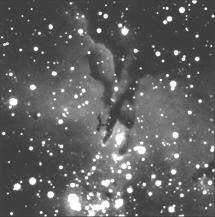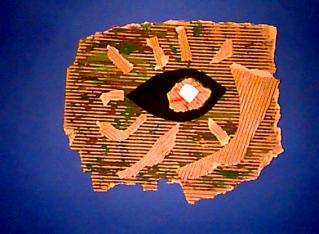Three Coins in the Fountain
|

Mars |

Victory |

Sol Invictus |
The reverse of three bronze coins
minted during Constantine’s early years
"Constantine like many of his predecessors had worshipped the Greek and Roman gods, particularly Apollo, Mars and Victory. This fact is evident in the portrayal of these gods on the earliest of Constantine’s coins. Yet surprisingly, even after his dream experience, and subsequent victory over Maxentius, it is recorded that he continued to worship these gods. Although the images of Apollo, Mars and Victory quickly disappeared from his coinage, later coins minted under Constantine shows that he likely continued to worship the sol invicta [sic] or ‘Unconquered Sun’ for 10 years or more after his dream experience. Yet, over a period of years, the experience of the sign, and the victory at the Milvian bridge, eventually led Constantine to favour and later to convert to the Christian faith."
— Ross Nightingale, "The 'Sign' that Changed the Course of History," in Ancient Coin Forum
"Three coins in the fountain,
Each one seeking happiness.
Thrown by three hopeful lovers,
Which one will the fountain bless?
Three hearts in the fountain,
Each heart longing for its home.
There they lie in the fountain
Somewhere in the heart of Rome."
-- Sinatra's version of the 1954 song
(Lyrics by Sammy Cahn, music by Jule Styne)
Which one will the fountain bless?
In order to answer this theological conundrum, we need to know more about the unfamiliar god Sol Invictus.
A quick web search reveals that some fanatical Protestants believe that the Roman deities Sol Invictus and Mithra were virtually the same. Of course, it is unwise to take the paranoid ravings of Protestants too seriously, but in this case they may be on to something.
The Catholic Church itself seems to identify Sol Invictus with Mithra:
"Sunday was kept holy in honour of Mithra.... The 25 December was observed as his birthday, the natalis invicti, the rebirth of the winter-sun, unconquered by the rigours of the season. A Mithraic community was not merely a religious congregation..."
— The Catholic Encyclopedia, 1911 edition.
Nihil Obstat, October 1, 1911. Remy Lafort, S.T.D., Censor
Imprimatur. +John Cardinal Farley, Archbishop of New York
It would seem, therefore, that as December 25 approaches we are preparing to celebrate the festival of Sol Invictus. This perhaps answers the theological riddle posed by Sammy Cahn.
From "Things Change," starring Don Ameche:
"A big man knows the value of a small coin."
Today's site music celebrates
Cahn, Styne, Sinatra, and the spirit of the 1950's.
Many thanks to Loyd's Piano Music Page
for this excellent rendition of a Styne classic.
1:06 am
| 
































